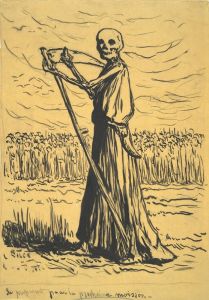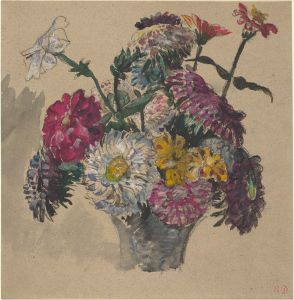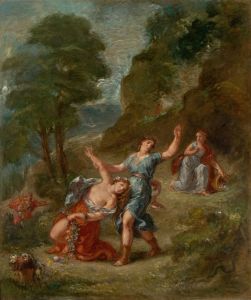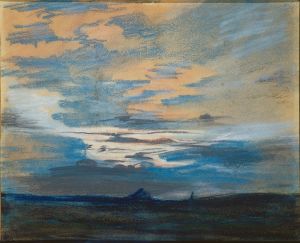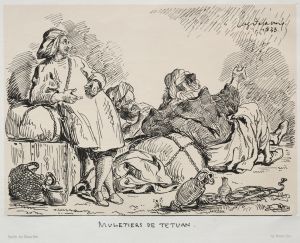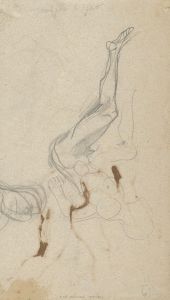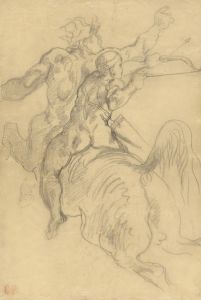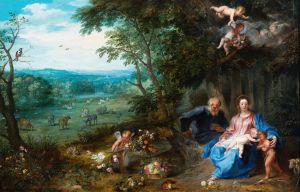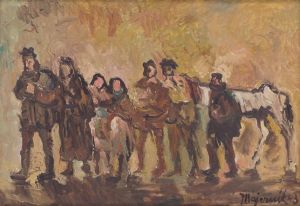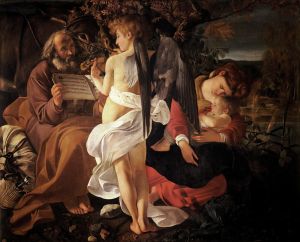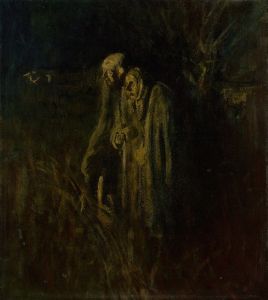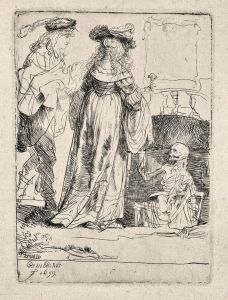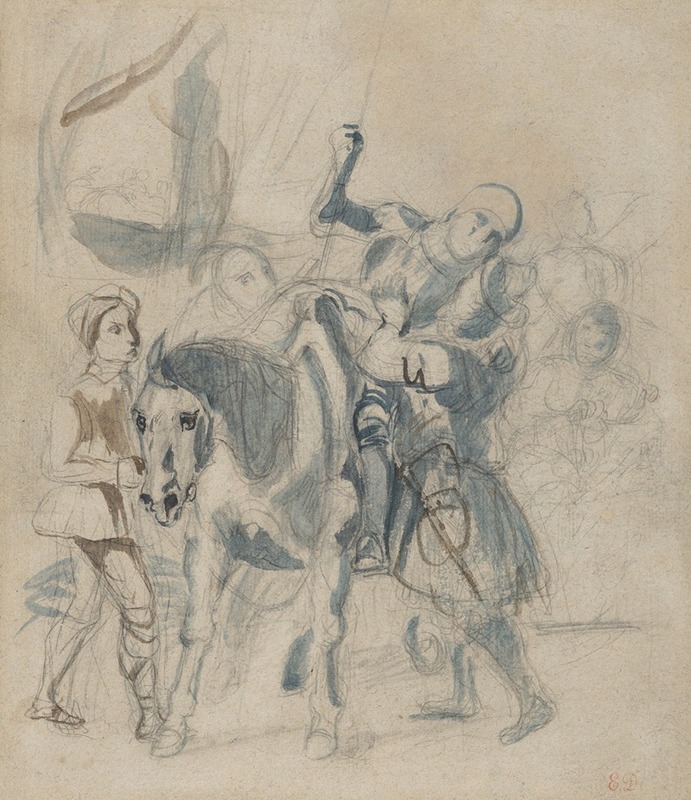
The Wounded Goetz von Berlichingen Takes Refuge in a Gypsy Camp
A hand-painted replica of Eugène Delacroix’s masterpiece The Wounded Goetz von Berlichingen Takes Refuge in a Gypsy Camp, meticulously crafted by professional artists to capture the true essence of the original. Each piece is created with museum-quality canvas and rare mineral pigments, carefully painted by experienced artists with delicate brushstrokes and rich, layered colors to perfectly recreate the texture of the original artwork. Unlike machine-printed reproductions, this hand-painted version brings the painting to life, infused with the artist’s emotions and skill in every stroke. Whether for personal collection or home decoration, it instantly elevates the artistic atmosphere of any space.
Eugène Delacroix, a leading figure of the French Romantic movement, painted "The Wounded Goetz von Berlichingen Takes Refuge in a Gypsy Camp" in 1853. This work is a vivid representation of Delacroix's fascination with dramatic historical and literary themes, as well as his mastery of color and movement.
The painting depicts a scene inspired by the historical figure Götz von Berlichingen, a 16th-century German knight known for his adventurous life and his iron prosthetic hand, which replaced the one he lost in battle. Berlichingen's life was popularized by Johann Wolfgang von Goethe's play "Götz von Berlichingen," written in 1773, which portrays him as a symbol of resistance against tyranny and a champion of personal freedom. Delacroix's painting captures a moment of vulnerability and drama, as the wounded knight seeks refuge among a group of gypsies.
Delacroix was known for his ability to convey emotion and movement through his use of color and dynamic compositions. In this painting, he employs a rich palette to create a sense of warmth and immediacy. The gypsy camp is depicted with vibrant hues, contrasting with the somber tones of the wounded knight, emphasizing his outsider status and the tension of the scene. The figures are arranged in a way that guides the viewer's eye through the composition, creating a narrative flow that is both engaging and expressive.
The painting reflects Delacroix's interest in exotic and dramatic subjects, a hallmark of the Romantic movement. This interest was partly fueled by his travels to North Africa in 1832, which had a profound impact on his artistic style. The experience exposed him to new cultures and landscapes, influencing his use of color and his depiction of non-European subjects. Although "The Wounded Goetz von Berlichingen Takes Refuge in a Gypsy Camp" is set in a European context, the inclusion of gypsies and the emphasis on dramatic storytelling align with the themes of exoticism and adventure that Delacroix often explored.
Delacroix's work was characterized by a departure from the neoclassical emphasis on order and restraint, embracing instead the Romantic ideals of emotion, individualism, and the sublime. His paintings often featured historical, literary, or contemporary events, rendered with a focus on the emotional and psychological states of his subjects. This approach is evident in "The Wounded Goetz von Berlichingen Takes Refuge in a Gypsy Camp," where the emotional intensity of the scene is heightened by the artist's dynamic brushwork and vivid color contrasts.
The painting is part of a broader body of work by Delacroix that explores themes of heroism, struggle, and the human condition. His ability to capture the complexity of human emotions and his innovative use of color and composition have cemented his legacy as one of the most influential artists of the 19th century. "The Wounded Goetz von Berlichingen Takes Refuge in a Gypsy Camp" exemplifies Delacroix's skill in blending historical narrative with Romantic expressiveness, offering viewers a glimpse into the artist's imaginative interpretation of a legendary figure's plight.
Today, Delacroix's works continue to be celebrated for their emotional depth and technical mastery, and they remain an important part of the study of Romantic art. His influence can be seen in the works of later artists who sought to capture the drama and emotion of the human experience through bold color and dynamic compositions.






